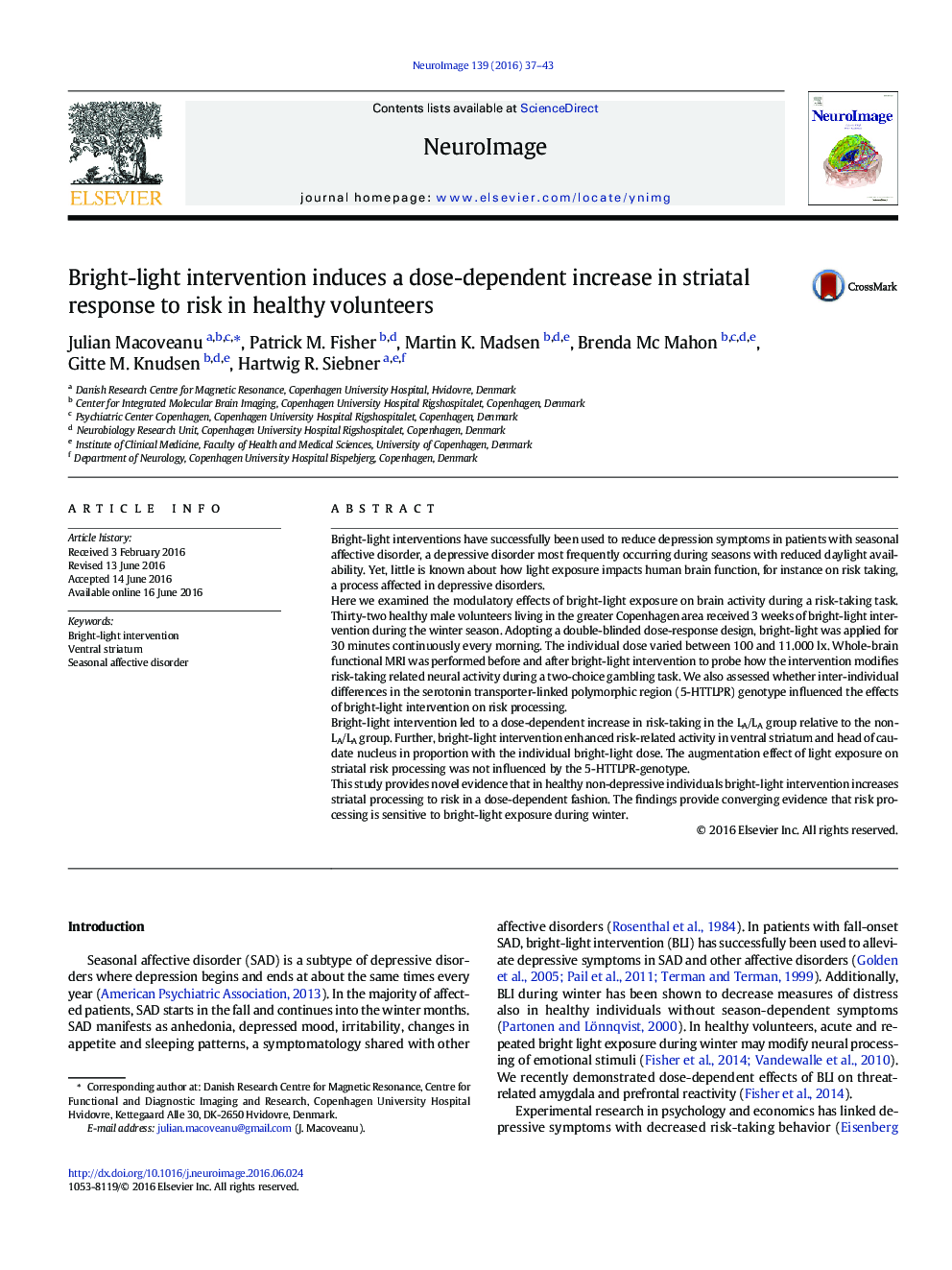| Article ID | Journal | Published Year | Pages | File Type |
|---|---|---|---|---|
| 6023396 | NeuroImage | 2016 | 7 Pages |
â¢Exposure to bright light may reduce depressive symptoms.â¢A 3-week bright-light intervention increased striatal response to risky choices.â¢Changes in risk-taking behavior post-intervention were determined by 5-HTTLPR status.
Bright-light interventions have successfully been used to reduce depression symptoms in patients with seasonal affective disorder, a depressive disorder most frequently occurring during seasons with reduced daylight availability. Yet, little is known about how light exposure impacts human brain function, for instance on risk taking, a process affected in depressive disorders.Here we examined the modulatory effects of bright-light exposure on brain activity during a risk-taking task. Thirty-two healthy male volunteers living in the greater Copenhagen area received 3Â weeks of bright-light intervention during the winter season. Adopting a double-blinded dose-response design, bright-light was applied for 30Â minutes continuously every morning. The individual dose varied between 100 and 11.000Â lx. Whole-brain functional MRI was performed before and after bright-light intervention to probe how the intervention modifies risk-taking related neural activity during a two-choice gambling task. We also assessed whether inter-individual differences in the serotonin transporter-linked polymorphic region (5-HTTLPR) genotype influenced the effects of bright-light intervention on risk processing.Bright-light intervention led to a dose-dependent increase in risk-taking in the LA/LA group relative to the non-LA/LA group. Further, bright-light intervention enhanced risk-related activity in ventral striatum and head of caudate nucleus in proportion with the individual bright-light dose. The augmentation effect of light exposure on striatal risk processing was not influenced by the 5-HTTLPR-genotype.This study provides novel evidence that in healthy non-depressive individuals bright-light intervention increases striatal processing to risk in a dose-dependent fashion. The findings provide converging evidence that risk processing is sensitive to bright-light exposure during winter.
